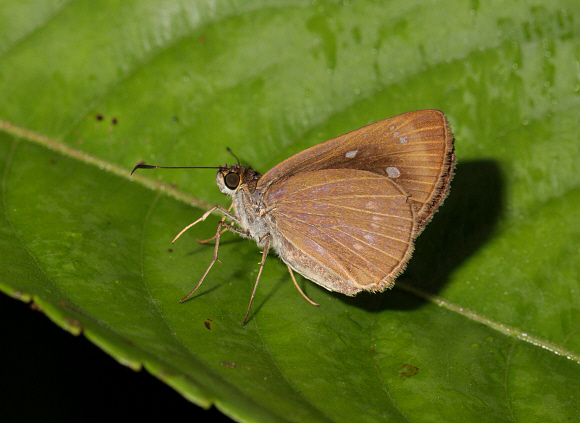
Introduction
There are at least 1038 known species of Grass Skippers ( Hesperiinae ) found in the neotropical region, many of which are virtually impossible to identify from photographs. A great many of them are dark brown in colour, and virtually devoid of recognisable markings. Often, any markings which are present are obscure, and it can be guaranteed that there will be several dozen near identical species which can only be told apart by killing them and microscopically examining the venation and genitalia. Because of these obstacles to identification most lepidopterists ignore these insects, but in even the most obscure species there are usually a few clues that can provide pointers and enable a positive identification to be made :
In the case of the illustrated species there are several similar butterflies in various genera but only nero has this particular configuration of hyaline spots. In combination with other features such as the dark suffusion in the disco-cellular region of the forewings and the clearly defined dark apex, the butterfly can be distinguished from it’s similar looking cousins.
There are 16 species in the genus Cobalopsis, variously found from Mexico to Argentina.
Data from museum specimens indicates that Cobalopsis nero occurs from southern Mexico to Peru.
Habitats
The illustrated specimen was seen in an area of disturbed primary rainforest at an altitude of about 200m. I do not have any further information regarding it’s elevational range, but it is reasonable to surmise that is occurs from sea-level to at least 400m.
Lifecycle
Unknown.
Adult behaviour
No observations other than that the butterfly was observed at a light gap in an area of disturbed forest.
